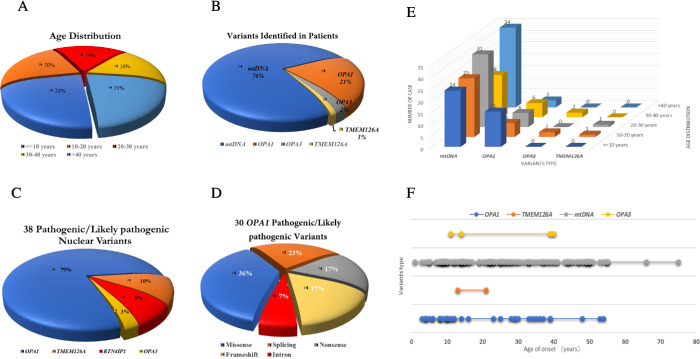Figure 1.
Basic information of clinical presentation and genetic finding of the ntDNA in the patients. (A) The age distribution of the total patients, including age ≤10 years (n = 99), 10 to 20 years (n = 86), 20 to 30 years (n = 78), 30 to 40 years (n = 67), and >40 years (n = 88). (B) The patients received a confirmed genetics diagnosis in this cohort, including mtDNA (n = 132), OPA1 (n = 36), OPA3 (n = 4), and homozygous TMEM126A (n = 2) variants. (C) Thirty-eight different pathogenic/likely pathogenic nuclear variants were detected in this cohort, including OPA1 gene (n = 30), TMEM126A gene (n = 4), RTN4IP1 gene (n = 3), and OPA3 gene (n = 1). (D) Thirty different OPA1 pathogenic/likely pathogenic variants were identified, including missense (n = 11), splicing (n = 7), nonsense (n = 5), frameshift (n = 5), and intron (n = 2) variants. (E, F) Multidimensional comparison between detection of variability in patients and age distribution.

